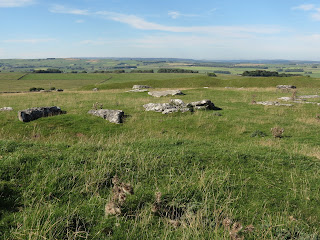Hillbre from Caldy Golf Course.
On friday I visited Hilbre Island with a birdwatching group that I have signed up for. Hilbre is a tidal island in the Dee Esturay off the top of the Wirral penisular. By coincidence I had played golf at the nearby Caldy Golf Club the previous weekend and hence the photo at the top.
Hilbre can be reached by foot at low tide from West Kirby and so on a cold morning we gathered at the slipway and set off to walk to the island. There are actually 3 island the tiny Little Eye, Little Hilbre and Hilbre Island itself.
We set off heading for Little Eye as this is the recommended route and after about three quarters of a mile we reached the first of the islands.
Little Eye is a very small island with no building and and we had short rest here, while we waited for some latecomers to catch us up and while waiting we spotted a group of around 40 grey seals resting on a sandbar further out in the estuary.
Once the group had reformed we left little Eye to walk to Little Hilbre again and island with no buildings but with some interesting rock formations. The island are mostly sandstone and are eroded by the sea and winds, Little Hilbre had the best examples of these erosions.
Finally we continued on to reach Hilbre Island itself. Hilbre does have a few buildings both intact and ruined.
There are no permenant residents but there are a couple of privately owned houses, as well as buildings used by the group that monitor the islands. We crossed to the northern tip where there is a ruined lifeboat station and this proved a good place to observe the birds we had come to see. Amonst the species we saw here were Oystercatcher, Knot, Brent Geese, Turnstone and a lone Purple Sandpiper. The last 3 were all new birds to me.
We spent about a hour here and then, as one of the guys would checks on the birdlife of the island with us, we headed towards their observatory to eat our lunches. On the way we checked on one of the places where they trap birds so they can ring them and found a Chaffinch wihch was duely taken, ringed and then released.
We then had a little tour of other places on the island, there is quite a bit of history to be seen, including the telegraph stationwhich was built in the mid 1800s by Mersey docks and is still standing.
We were also told how during WW2 Hilbre was the base for a string of decoy lights down the Dee estuary, which were supposed to confuse German bombers into thinking it was Liverpool Docks.
After a 4 hour visit to the islands we set off on the 2 mile walk back to West Kirby. It was a very enjoyable and interesting day and it might be nice to return on a nice summer day and stay on the island while the tide comes in and goes back out again.
.

































